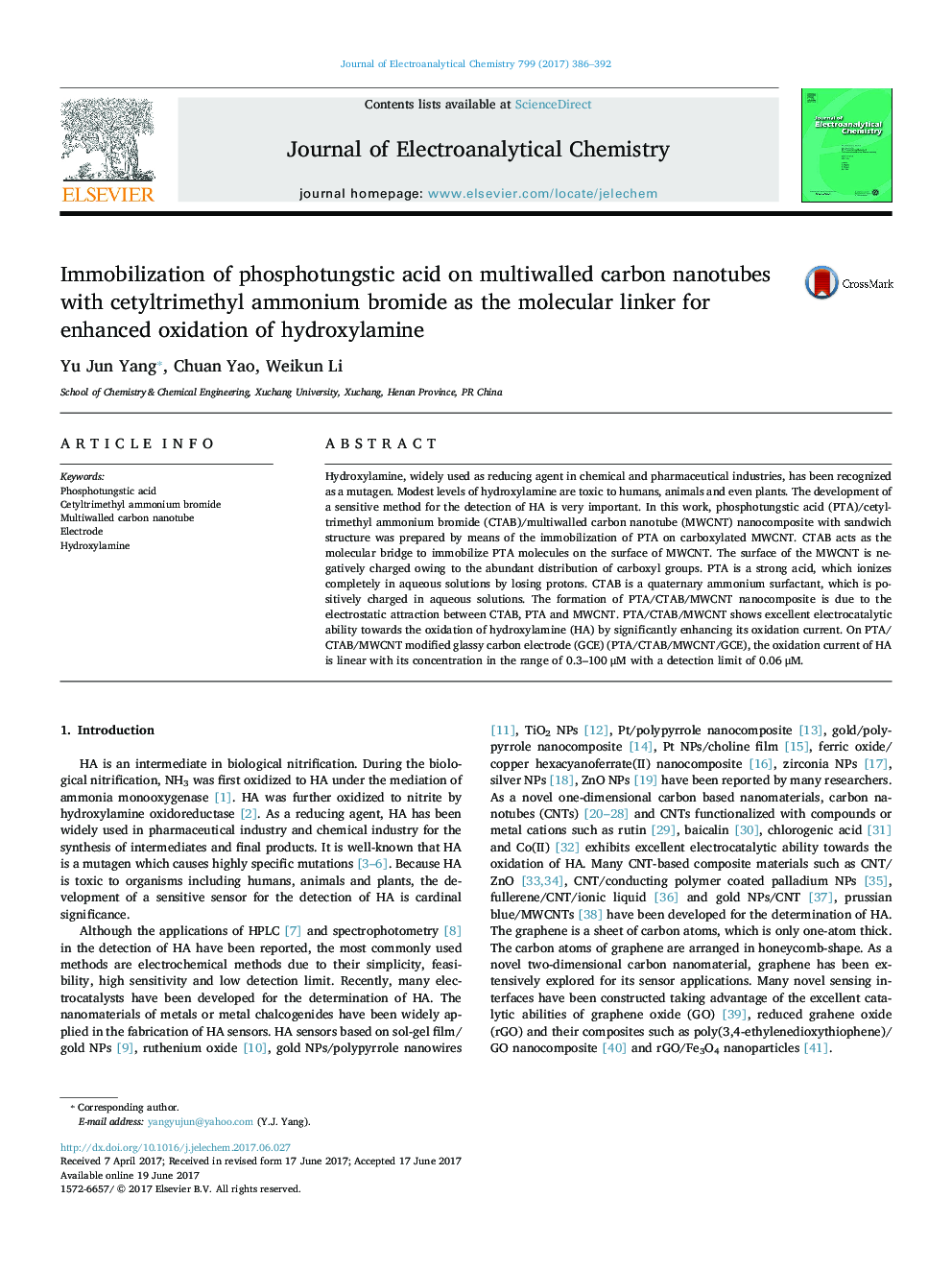| Article ID | Journal | Published Year | Pages | File Type |
|---|---|---|---|---|
| 4907765 | Journal of Electroanalytical Chemistry | 2017 | 7 Pages |
Abstract
Hydroxylamine, widely used as reducing agent in chemical and pharmaceutical industries, has been recognized as a mutagen. Modest levels of hydroxylamine are toxic to humans, animals and even plants. The development of a sensitive method for the detection of HA is very important. In this work, phosphotungstic acid (PTA)/cetyltrimethyl ammonium bromide (CTAB)/multiwalled carbon nanotube (MWCNT) nanocomposite with sandwich structure was prepared by means of the immobilization of PTA on carboxylated MWCNT. CTAB acts as the molecular bridge to immobilize PTA molecules on the surface of MWCNT. The surface of the MWCNT is negatively charged owing to the abundant distribution of carboxyl groups. PTA is a strong acid, which ionizes completely in aqueous solutions by losing protons. CTAB is a quaternary ammonium surfactant, which is positively charged in aqueous solutions. The formation of PTA/CTAB/MWCNT nanocomposite is due to the electrostatic attraction between CTAB, PTA and MWCNT. PTA/CTAB/MWCNT shows excellent electrocatalytic ability towards the oxidation of hydroxylamine (HA) by significantly enhancing its oxidation current. On PTA/CTAB/MWCNT modified glassy carbon electrode (GCE) (PTA/CTAB/MWCNT/GCE), the oxidation current of HA is linear with its concentration in the range of 0.3-100 μM with a detection limit of 0.06 μM.
Keywords
Related Topics
Physical Sciences and Engineering
Chemical Engineering
Chemical Engineering (General)
Authors
Yu Jun Yang, Chuan Yao, Weikun Li,
